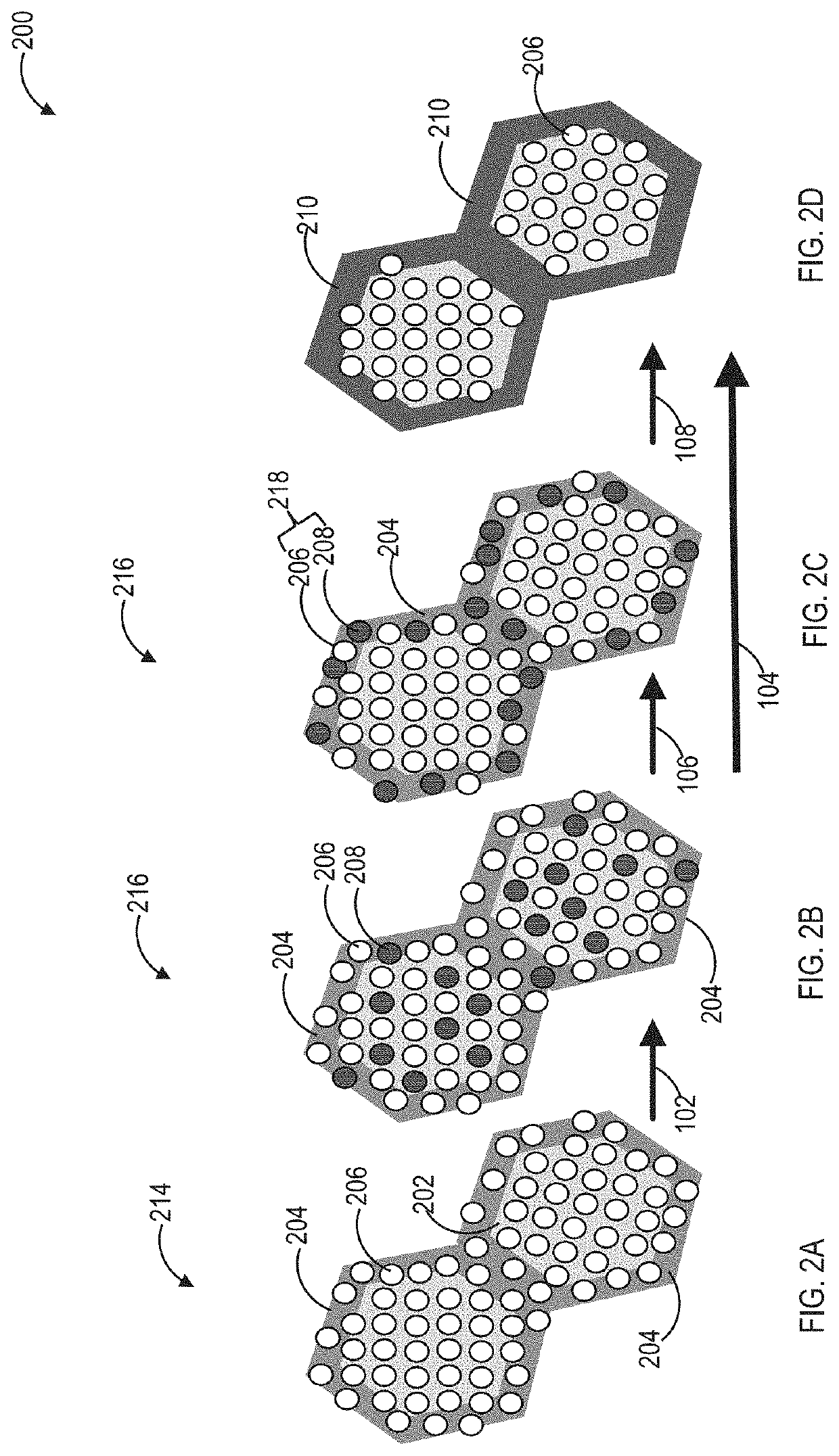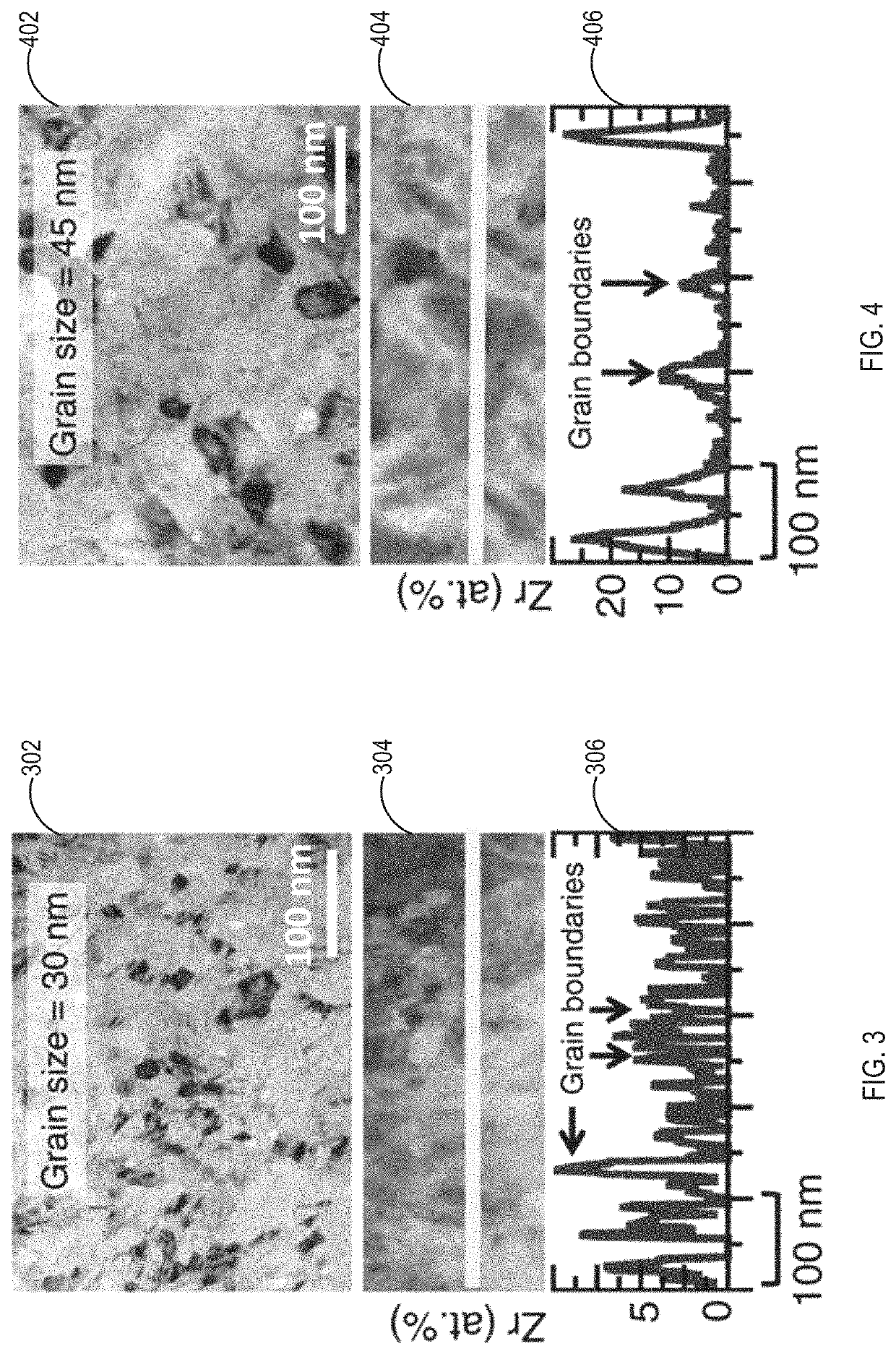Enhancing mechanical properties of nanostructured materials with interfacial films
a nanostructured material and interfacial film technology, applied in the field of enhancing strength, ductility, and thermal stability of nanostructured materials, can solve the problems of gradient nanostructures without added thermal stability, degrade the ductility of nanostructured materials even more, and limited application of nanostructured materials, etc., to achieve enhanced strength and ductility, enhanced ductility of aifs, and reduced energy penalty
- Summary
- Abstract
- Description
- Claims
- Application Information
AI Technical Summary
Benefits of technology
Problems solved by technology
Method used
Image
Examples
Embodiment Construction
[0029]Following is a list of elements corresponding to a particular element referred to herein:
[0030]100 method
[0031]102 mix dopant element with base material
[0032]104 heat treatment
[0033]106 first heat treatment
[0034]108 second heat treatment
[0035]110 quench
[0036]200 schematic representation
[0037]202 crystalline interior
[0038]204 grain boundary
[0039]206 base material
[0040]208 dopant element
[0041]210 amorphous intergranular film (AIF)
[0042]214 nanostructured material
[0043]216 solid material alloy
[0044]218 interfacial mixture
[0045]302 TEM image
[0046]304 TEM image
[0047]306 EDS profile
[0048]402 TEM image
[0049]404 TEM image
[0050]406 EDS profile
[0051]502 image
[0052]602 image
[0053]604 area
[0054]606 interface
[0055]608 area
[0056]610 Fast Fourier Transform (FFT) pattern
[0057]612 FFT pattern
[0058]614 FFT pattern
[0059]802 plot
[0060]804 plot
[0061]Referring now to FIGS. 1-8, the present invention features a method for increasing thermal stability and ductility in a nanostructured material. FIG. ...
PUM
| Property | Measurement | Unit |
|---|---|---|
| temperature | aaaaa | aaaaa |
| melting temperature | aaaaa | aaaaa |
| threshold temperature | aaaaa | aaaaa |
Abstract
Description
Claims
Application Information
 Login to View More
Login to View More - R&D
- Intellectual Property
- Life Sciences
- Materials
- Tech Scout
- Unparalleled Data Quality
- Higher Quality Content
- 60% Fewer Hallucinations
Browse by: Latest US Patents, China's latest patents, Technical Efficacy Thesaurus, Application Domain, Technology Topic, Popular Technical Reports.
© 2025 PatSnap. All rights reserved.Legal|Privacy policy|Modern Slavery Act Transparency Statement|Sitemap|About US| Contact US: help@patsnap.com



